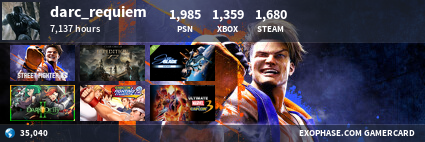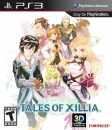I knew Kwaad would to his usual siding stepping and issue dodging. He is a troll after all. Guess this is going to be a long post. Kwaad won't acknowledge his mistake as usual but I'll make him look foolish anyway. Nintendo 64 CPU: MIPS 64-bit RISC CPU (customized R4000 series) CLOCK SPEED: 93.75 MHz CO-PROCESSOR: 64-bit RISC processor running at 62.5 MHz RCP SP (Sound and Graphics Processor) and DP ( Pixel Drawing Processor) GRAPHICS PROCESSING FUNCTION: Z-Buffering, Anti-aliasing, eliminates jagged lines and edges, mostly in low res. Realistic texture-mapping. Alpha Channel effectsFog, Transparency, etc. Ray-Tracing/sophisticated form of light tracing ability. Gouraud shading, (Featuring: Tri-Linear filtered mip-map interpolation, Perspective correction, Environment mapping) MEMORY: Rambus D-RAM 36 Mbits TRANSFER SPEED: Maximum transfer speed 4,500 M bits/sec. running at 500Mhz. RESOLUTION: 256 X 224 - 640 X 480 dots with flicker free interlace mode support COLOR: Maximum: 16.8 million colors, 32-Bit RGBA Pixel Color Frames Buffer Support & 21-Bit color video output out of a 16.8 million color palette it can display 32,000 on screen colors at once VIDEO OUTPUT: RF, RGB, and HDTV compatible AUDIO: Stereo 16-bit/64 PCM channels sampled at 44.1 kHz BENCHMARK PERFORMANCE: Main CPU clocked at 125 MIPS (millions of instructions per second) Graphics Co-Processor clocked at 100+ MFLOPS (millions of floating point operations per second)100,000 polygons per second, with all hardware graphic features turned on. CONTROLLER: Input for four controllers Analog/Digital Total of nine buttons DIMENSIONS: 10.23" wide x 7.48" deep x 2.87" high WEIGHT: 2.42 pounds Dreamcast Processor: Hitachi SH-4 running at 200 Mhz. 360 MIPS Memory: 16MB main RAM Display : 8MB video RAM. 3 million polygons/second peak rendering rate . Perspective-Correct Texture Mapping. Point, Bilinear, Trilinear and Anisotropic Mip-map filtering. Gouraud shading. z-buffer. Colored light sourcing. Full scene anti-aliasing. Hardware-based Fog Bump mapping. 16.77 million colors. Hardware-based texture compression Shadow and Light volumes. Super sampling Sound: 2MB sound RAM. 32bit RISC CPU. DSP for real-time effects. 64 sound channels. Full 3D sound support. Hardware-based audio compression. Ports: 4 controller ports. Built-in 56kbps modem Built-in high-speed expansion ports Gamecube Central Processing Unit 485 MHz IBM "Gekko" PowerPC CPU. * PowerPC 750CXe based core.[10] * 180 nm IBM copper-wire process. 43-mm² die. 4.9 W dissipation.[10] * Roughly 50 new vector instructions.[10] * 32-bit ALU. 64-bit FPU, usable as 2x32-bit SIMD[10] o 1.9Gflops on fpu(10Gflops means the whole unit in operations such as geometry engine, T&L, TEV and other, this number is not all on the cpu) * 64-bit enhanced PowerPC 60x front side bus to GPU/chipset. 162 MHz clock. 1.3 GB/s peak bandwidth.[10] * 64 KB L1 cache (32 KB I/32 KB D). 8-way associative. 256 KB on-die L2 cache. 2-way associative.[10] * 1125 DMIPS (dhrystone 2.1) [edit] System Memory 43 MB total non-unified RAM * 24 MB MoSys 1T-SRAM (codenamed "Splash") main system RAM. 324 MHz, 64-bit bus. 2.7 GB/s bandwidth.[10] * 3 MB embedded 1T-SRAM within "Flipper".[11] o Split into 1 MB texture buffer and 2 MB frame buffer.[11] o 10.4 GB/s texture bandwidth (peak). 7.6 GB/s framebuffer bandwidth (peak). ~6.2 ns latency.[10] * 16 MB DRAM used as buffer for DVD drive and audio. 81 MHz, 8-bit bus. 81 MB/s bandwidth.[10] [edit] Graphics Processing Unit and System Chipset 162 MHz "Flipper" LSI. 180 nm NEC EDRAM-compatible process. Co-developed by Nintendo and ArtX. * 4 pixel pipelines with 1 texture unit each[10] * TEV "Texture EnVironment" engine (similar to "pixel shader") [12][13] * Fixed-function hardware transform and lighting (T&L). 12+ million polygons/s in-game.[13] * 648 megapixels/second (162 MHz x 4 pipelines), 648 megatexels/second (648 MP x 1 texture units) (peak) o Peak triangle performance: 20,250,000 32pixel triangles/sec raw and with textures and lit * 8 texture layers per pass, texture compression, full scene anti-aliasing[13] * Bilinear, trilinear, and anisotropic texture filtering * Multi-texturing, bump mapping, reflection mapping, 24-bit z-buffer * 24-bit RGB / RGBA color depth. o Hardware limitations sometimes require a 6r+6g+6b+6a mode (18-bit color), resulting in color banding. * 640×480 interlaced or progressive scan * Integrated audio processor: Custom 81 MHz Macronix DSP o Instruction Memory: 8 KB RAM, 8 KB ROM o Data Memory: 8 KB RAM, 4 KB ROM o 64 channels 16-bit 48 KHz ADPCM[13] o Dolby Pro Logic II, AC3 signal through "digital out" with D-Terminal cable Playstation 2 Emotion Engine * MIPS IV-Subset * 300 MHz (294.912 MHz) * 128-bit Integer SIMD * 128-bit Floating-Point SIMD * 24KB Cache (16KB Instruction + 8KB Data) * 16KB Scratch Pad RAM * Co-Processor 1: FPU o Floating Point Multiply Accumulator (FMAC) x 1 o Floating Point Divider (FDIV) x 1 o 8KB Cache (4KB Instruction + 4KB Data) * Co-Processor 2: VU0 o Floating Point Multiply Accumulator (FMAC) x 4 o Floating Point Divider (FDIV) x 1 o 8KB Cache (4KB Instruction + 4KB Data) * Vector Processing Unit: VU1 o Floating Point Multiply Accumulator (FMAC) x 5 o Floating Point Divider (FDIV) x 2 o 32KB Cache (16KB Instruction + 16KB Data) * 450 Dhrystone MIPS * 6.2 GFLOPS * Geometry: o 66 Million Polygons per Second (peak) o 38 Million Polygons per Second (lighting) o 36 Million Polygons per Second (fog) o 16 Million Polygons per Second (curved surface generation) * Image Processing Unit (IPU): MPEG2 Compressed Image Decoder o 150 Million Pixels per Second * DMA: 10 channels Graphics Synthesizer (GS) * 150 MHz (147.456 MHz) * 16 Pixel Pipelines * 2.4 Gigapixels per Second (no texture) * 1.2 Gigatexels per Second * Point, Bilinear, Trilinear, Anisotropic Mip-Map Filtering * Perspective-Correct Texture Mapping * Bump Mapping * Environment Mapping * 32-bit Color (RGBA) * 32-bit Z Buffer * 4MB Multiported Embedded DRAM * 38.4 Gigabytes per Second eDRAM Bandwidth (19.2 GB/s in each direction) * 9.6 Gigabytes per Second eDRAM Texture Bandwidth * 150 Million Particles per Second * Polygon Drawing Rate: o 75 Million Polygons per Second (small polygon) o 50 Million Polygons per Second (48-pixel quad with Z and Alpha) o 30 Million Polygons per Second (50-pixel triangle with Z and Alpha) o 25 Million Polygons per Second (48-pixel quad with Z, Alpha, and Texture) * 18.75 Million Sprites per Second (8 x 8 pixel sprites) Emotion Engine to Graphics Synthesizer Bus * 64 Bits Wide * 150 MHz * 1.2 Gigabytes per Second Bandwidth Main Memory * 32 Megabytes RAMBUS DRAM * 32 Bits Wide (Dual Channel 16-bit) * 400 MHz (800 MHz Effective) * 800 Megabits per Second per Pin * 3.2 Gigabytes per Second Bandwidth I/O Processor * Based on PSone CPU * 33.8688 MHz or 36.864 MHz (selectable) * 2MB Memory * USB, IEEE-1394, Sound, DVD-ROM, and PCMCIA Controller Sound Chip * 48 Voices * 2MB Memory * Supports Dolby, AC3, and DTS output Storage * 4x DVD-ROM * DVD-5 Disc Format (4.7 Gigabytes) * Memory Cards Now if you are still reading Kwaad, you will notice that anti aliasing is not a hardware feature on PS2. So its not "free," Anti-aliasing has to be software coded which is why PS2 games have always has issues with jaggies. As for you claim that Final Fantasy 12 looks BEAUTIFUL on your HDTV. Whatever credibility you had left just vanished with that statement. FF12 looks terrible on an HD set, besides not having a true 16:9 picture, there are back bars even on the 16:9 mode. The sharper image an HDTV set provides makes what is a beautiful game on my brother's SDTV set, look dated on my HD set. DQVIII has the same problem.





































 PSN ID: Staticneuron
Gamertag: Staticneuron
Wii Code: Static Wii - 3055 0871 5802 1723
PSN ID: Staticneuron
Gamertag: Staticneuron
Wii Code: Static Wii - 3055 0871 5802 1723















